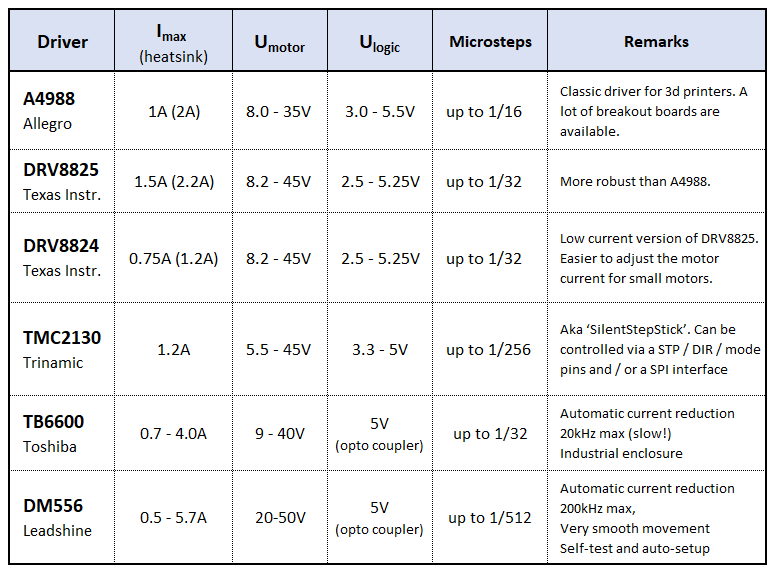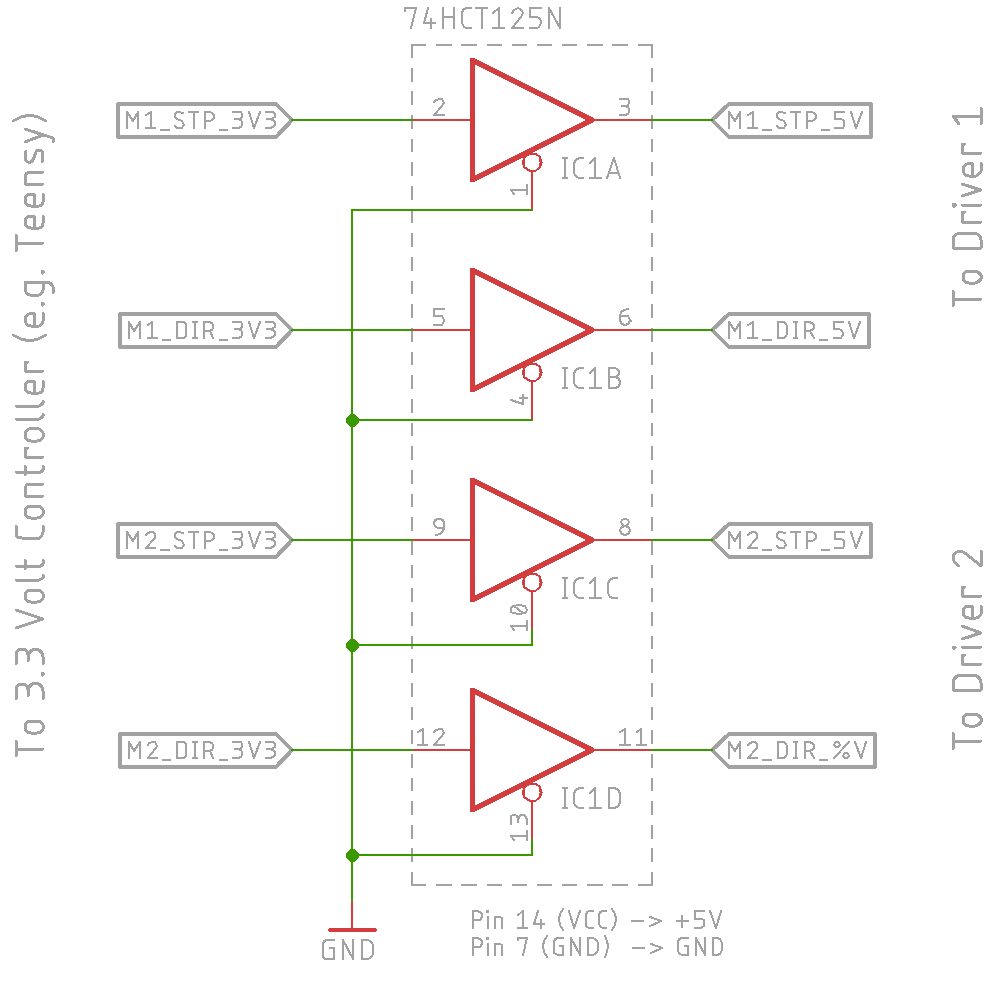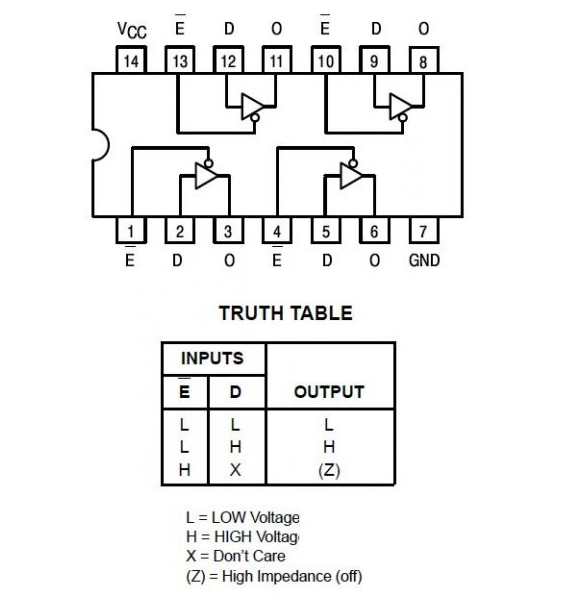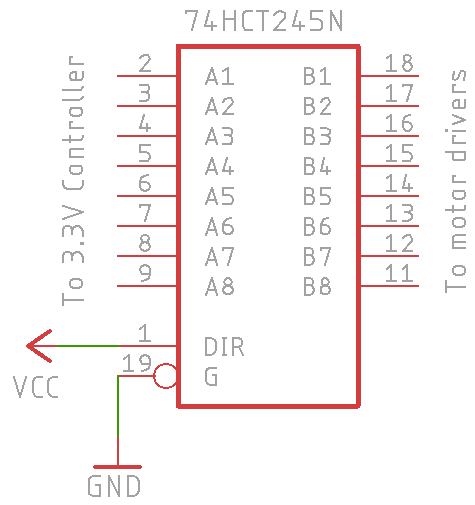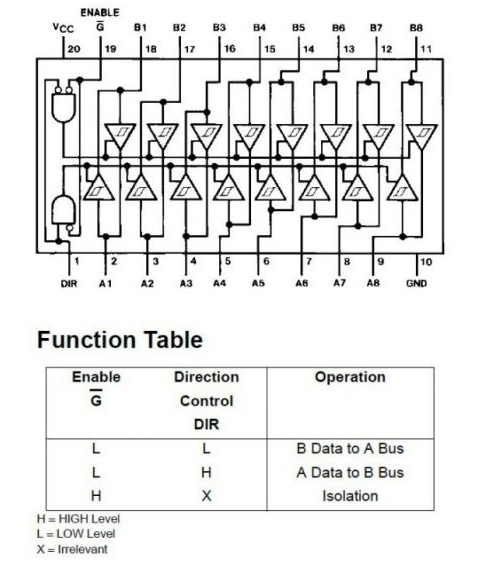Hooking up a Driver
Operating a stepper always requires some kind of driving electronics to energize the motor coils. In the most simple case this can be 4 transistors connected to a unipolar constant voltage stepper. Anyway, these days stepper drivers with a much better performance and an easy to use STEP / DIR interface are readily available for steppers of all types and sizes.
Constant Current Drivers
Most of the modern stepper drivers are developed for bipolar steppers and operate in constant current mode. The table below shows a few popular devices and their key specifications.
Logic Level Conversion
The control signals of a Stepper driver with a 3.3V logic interface can be connected to a Teensy (or any other 3.3V output controller) directly. For drivers with a 5V or an opto-coupled input you need a level shifter to connect them to a 3.3V controller. The figure below shows how to do that with a 74HCT125 containing 4 buffers which accept 3.3V input signals and generate 5V output signals.
Alternatively you can use a 74HCT245 which contains 8 buffers. The DIR pin of that chip defines the buffer direction. Set it to VCC for A->B or to GND for B->A.
Note: For both ICs make sure to connect the VCC pin to the 5V supply.
Constant Voltage Drivers
If you need to drive a constant voltage motor like the cheap and very popular 28BYJ-48 you can simply use four transistors, a integrated Darlington driver like the ULN2003 or an integrated H-bridge module like the L298.


Here you find a nice writeup describing the method.
![Marjory Collins [Public domain], via Wikimedia Commons Marjory Collins [Public domain], via Wikimedia Commons](https://upload.wikimedia.org/wikipedia/commons/3/39/This_man_has_been_a_volunteer_fire_engine_driver_for_twenty-three_years_8d23545v.jpg)
